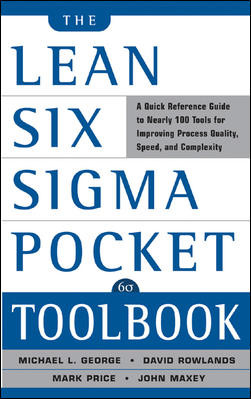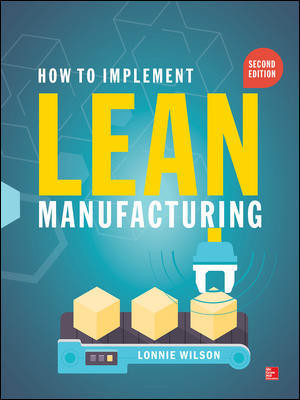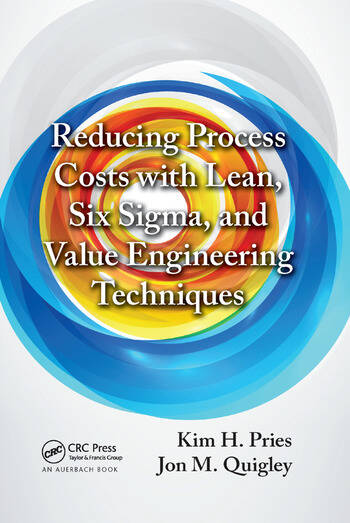Leading Lean: NIH
Not Invented Here is
toxic to the basic principle of lean-continuous improvement.
We’ve all seen it. Because it was Not Invented Here, a good idea from another department or company is rejected. Here’s a news flash: NIH is arguably the stupidest reason in the universe for not doing something. Worse yet, it’s toxic to the basic principle of lean-continuous improvement.
We need good ideas that will improve performance. Good ideas are everywhere, but we prefer originality to effectiveness. NIH is clearly embedded in human behavior, so our challenge is to change this aspect of human behavior, at least within our own organization. We need to make adopting existing ideas at least as important as creating original ideas.
In most organizations, anyone creating an original idea is celebrated. The people adopting that idea and putting it to work owe the originator a debt of gratitude, and the originator gets all the credit.
However, one of the most glaring differences I see in a site that is clearly stepping rapidly ahead of its peers is this-that lead site is a fast follower! The people at that site gather ideas without discriminating among sources. Then they adopt those ideas, modify as needed, and put them to work. Here’s how several companies successfully primed the pump of adoption.
Our first example is an organization with many distributed P&L centers. It was great at generating innovations but struggling to get them picked up across the organization. Each Monday morning the CEO called several different general managers, eventually talking with all of them. Early on, the CEO heard a great deal of bragging about innovations in both product and process, but it was all localized.
Then the CEO changed focus and began asking “What ideas have you learned about and adopted from other sites in the company?” This question brought new attention to the concept of adopting ideas from other sites, and put NIH on the back burner. General managers who tried to fake their way through answering that question learned very quickly that NIH was no longer an acceptable way to run their businesses. Human behavior will always default to NIH if left unchecked, of course, but the general managers were put on notice that they were responsible for overcoming it.
In our second example, a vice president in another organization focused on people who just sat on their ideas without pushing on boundaries and taking their ideas to other sites. In operations reviews, he stopped anyone bragging about a great idea that had been implemented by asking “Would this apply elsewhere?” The individual typically listed other sites where it might apply, and the VP would retort, “On a scale of 100, you get a 10. When you get the idea implemented in those other areas, then you get 100.” His message was crystal clear. An idea itself is worthless. An idea implemented is valuable. And that’s the work we pay you for. NIH is not a valid philosophy.
The onus for overcoming NIH is often placed on the adopter, but we should also think about the role of the promoter in the organization. Adoption is a two-way street, and those with new ideas often fall well short of the potential for promoting and implementing their ideas. The arguments are many. Overcoming NIH is hard, so why not let someone else do it. I wasn’t invited, so who am I to push. These are not legitimate. Whether or not we are change agents, our job is to contribute to the organization.
NIH can be overcome. But remember to lead by example. NIH is human nature, we are all susceptible, and we’ve all succumbed at one time or another. Set the example in your organization by overcoming NIH yourself.
Lean begins with you!
Jamie Flinchbaugh is a founder and partner of the Lean Learning Center in Novi, MI, and the co-author of The Hitchhiker’s Guide to Lean: Lessons from the Road. He shares his successful and varied experiences of lean transformation as a practitioner and leader through companies such as Chrysler and DTE Energy. He also has a wide range of practical experience in industrial operations, including production, maintenance, material control, product development and manufacturing engineering. Jamie is a graduate fellow of the Leaders for Manufacturing Program at the Massachusetts Institute of Technology, where his research thesis was on implementing lean manufacturing through factory design. He also holds a B.S. in Engineering from Lehigh University in Bethlehem, PA, and an M.S. in Engineering from the University of Michigan. To contact Jamie directly, go to the web site www.leanlearningcenter.com.
We’ve all seen it. Because it was Not Invented Here, a good idea from another department or company is rejected. Here’s a news flash: NIH is arguably the stupidest reason in the universe for not doing something. Worse yet, it’s toxic to the basic principle of lean-continuous improvement.
We need good ideas that will improve performance. Good ideas are everywhere, but we prefer originality to effectiveness. NIH is clearly embedded in human behavior, so our challenge is to change this aspect of human behavior, at least within our own organization. We need to make adopting existing ideas at least as important as creating original ideas.
In most organizations, anyone creating an original idea is celebrated. The people adopting that idea and putting it to work owe the originator a debt of gratitude, and the originator gets all the credit.
However, one of the most glaring differences I see in a site that is clearly stepping rapidly ahead of its peers is this-that lead site is a fast follower! The people at that site gather ideas without discriminating among sources. Then they adopt those ideas, modify as needed, and put them to work. Here’s how several companies successfully primed the pump of adoption.
Our first example is an organization with many distributed P&L centers. It was great at generating innovations but struggling to get them picked up across the organization. Each Monday morning the CEO called several different general managers, eventually talking with all of them. Early on, the CEO heard a great deal of bragging about innovations in both product and process, but it was all localized.
Then the CEO changed focus and began asking “What ideas have you learned about and adopted from other sites in the company?” This question brought new attention to the concept of adopting ideas from other sites, and put NIH on the back burner. General managers who tried to fake their way through answering that question learned very quickly that NIH was no longer an acceptable way to run their businesses. Human behavior will always default to NIH if left unchecked, of course, but the general managers were put on notice that they were responsible for overcoming it.
In our second example, a vice president in another organization focused on people who just sat on their ideas without pushing on boundaries and taking their ideas to other sites. In operations reviews, he stopped anyone bragging about a great idea that had been implemented by asking “Would this apply elsewhere?” The individual typically listed other sites where it might apply, and the VP would retort, “On a scale of 100, you get a 10. When you get the idea implemented in those other areas, then you get 100.” His message was crystal clear. An idea itself is worthless. An idea implemented is valuable. And that’s the work we pay you for. NIH is not a valid philosophy.
The onus for overcoming NIH is often placed on the adopter, but we should also think about the role of the promoter in the organization. Adoption is a two-way street, and those with new ideas often fall well short of the potential for promoting and implementing their ideas. The arguments are many. Overcoming NIH is hard, so why not let someone else do it. I wasn’t invited, so who am I to push. These are not legitimate. Whether or not we are change agents, our job is to contribute to the organization.
NIH can be overcome. But remember to lead by example. NIH is human nature, we are all susceptible, and we’ve all succumbed at one time or another. Set the example in your organization by overcoming NIH yourself.
Lean begins with you!
Jamie Flinchbaugh is a founder and partner of the Lean Learning Center in Novi, MI, and the co-author of The Hitchhiker’s Guide to Lean: Lessons from the Road. He shares his successful and varied experiences of lean transformation as a practitioner and leader through companies such as Chrysler and DTE Energy. He also has a wide range of practical experience in industrial operations, including production, maintenance, material control, product development and manufacturing engineering. Jamie is a graduate fellow of the Leaders for Manufacturing Program at the Massachusetts Institute of Technology, where his research thesis was on implementing lean manufacturing through factory design. He also holds a B.S. in Engineering from Lehigh University in Bethlehem, PA, and an M.S. in Engineering from the University of Michigan. To contact Jamie directly, go to the web site www.leanlearningcenter.com.
Looking for a reprint of this article?
From high-res PDFs to custom plaques, order your copy today!





